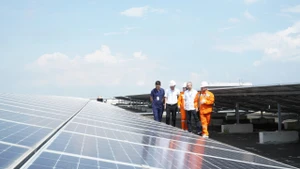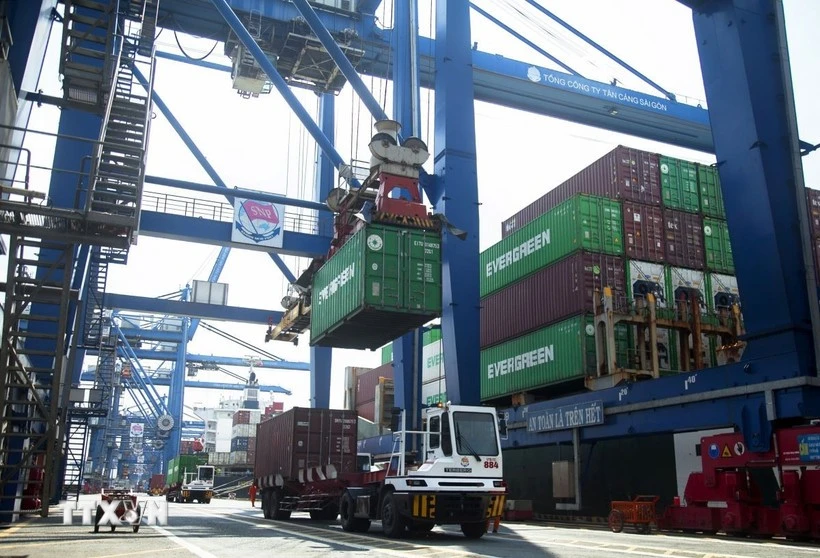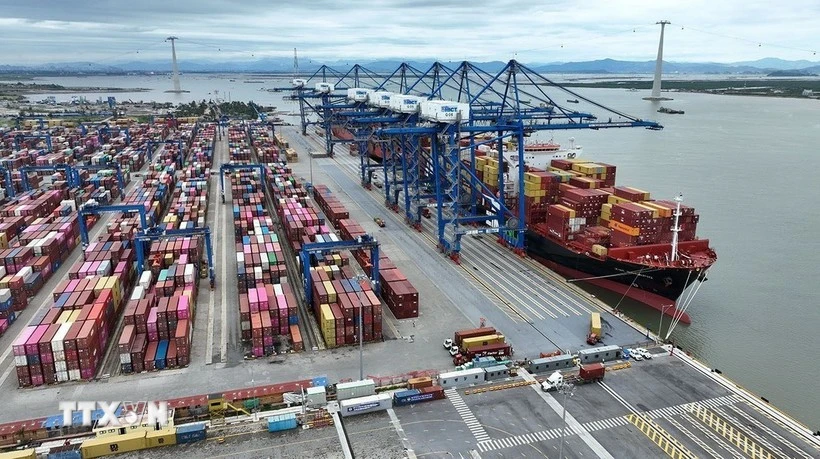The GDP growth rate in the first quarter of 2023 was announced at 3.32%, which is 2.28 percentage points lower than the growth scenario of 5.6% for the first quarter set out in Resolution 01/NQ-CP in February, which focused on key tasks and solutions to implement the 2023 socio-economic development plan, state budget estimate and improve the business environment and national competitiveness in 2023. Based on the projections for the second quarter and the entire year, the Ministry of Planning and Investment (MPI) has updated the economic growth scenario for the whole of 2023.
At a meeting between the government’s members and localities nationwide a few days ago, MPI Minister Nguyen Chi Dung reported two new economic growth scenarios for the year.
Under the first scenario, it is forecast that GDP growth for the whole year will reach about 6%, which is 0.5 percentage points lower than the target set by the National Assembly. To achieve this result, growth in the second, third and fourth quarters must follow the scenario in Resolution 01 at 6.7%, 6.5%, and 7.1%, respectively.
Under the second scenario, the entire year’s economic growth is set as 6.5%. To this end, GDP growth in the second quarter must be 6.7% (equivalent to the scenario of Resolution 01), while the growth rates in the second and third quarters must be 7.5% and 7.9% – with the respective figures being 1 and 0.8 percentage points higher than the scenario in Resolution No.01.
Minister Dung said that in the case that GDP growth in 2023 is only 6%, it will put great pressure on the 5-year growth target of 2021-2025 (6.5-7%). “So as to achieve the 5-year average growth target of 6.5%, it is required that in 2024 - 2025, an average growth rate of nearly 8% per year is required,” said Minister Dung.
For the economy to grow 6.5% this year, great efforts and determination of the whole political system must be made as according to the minister, this is a “very challenging” scenario and “Difficulty may last until the end of the second quarter,” said Minister Dung.
The government will require leaders of all 63 provinces and cities under the central rule to establish local-level special taskforces in charge of helping investors and businesses with projects that are currently facing difficulties.
“Chairpersons of provinces and cities will serve as heads of their localities’ taskforces which will have to work directly with all difficulty-hit projects’ investors and map out ways-out for projects,” said MPI Deputy Minister Tran Quoc Phuong. “The key reason behind this new solution is aimed to lift production and business activities out of difficulties as soon as possible as enterprises have faced with massive difficulties since early this year.”
Prime Minister Pham Minh Chinh has ordered ministries and localities nationwide to continue employing measures to help enterprises and people out of difficulties.
“Greater efforts are to be made to boost production and business activities, generate more employment and improve people’s livelihoods,” PM Chinh stressed.
The government will promulgate a resolution which covers many issues including solutions to help enterprises out of difficulties. Ministries and sectors will be tasked with specific duties.
Figures from the government showed that in the first quarter, the first-quarter year-on-year economic growth of 3.32% is the lowest first-quarter growth rate in the last 12 years.
Vietnam’s year-on-year index for industrial production (IIP) in the first quarter is estimated to drop 2.2% as compared to the corresponding period last year when the IIP increased 6.8% year on year.
In the first three months of 2023, the mining sector declined 4.4% as compared to the same period last year when it ascended 2.8% year on year. The processing and manufacturing sector also dropped 2.4% year on year, while the same period last year recorded a year-on-year climb of 7.3%. In addition, the electricity production and distribution sector also decreased 1% year on year, versus an 8% jump in the first quarter of last year.
Additionally, nearly 34,000 businesses were newly established in the first quarter of this year, with total registered capital at close to 13.5 billion USD and providing employment for as many as 212,300 labourers – down 2% in the number of enterprises, 34.1% in registered capital, and 12.8% in the number of labourers in comparison with those in the corresponding period last year.
According to the Asian Development Bank’s Asian Development Outlook April 2023 released early this week, after a strong performance in 2022, Vietnam’s economic growth is expected to moderate at 6.5% this year and further expand at 6.8% in 2024.
“2023 will be a challenging year. Vietnam’s economic growth will be constrained by the global slowdown, continued monetary tightening in developed economies, and spillover from global geopolitical tensions. The global economic decline deepened in the fourth quarter of 2022 and will likely continue in 2023,” said Andrew Jeffries, ADB country director for Vietnam.
Fitch Solutions also said that Vietnam’s real GDP growth slowed sharply from 13.7% year on year in the third quarter of this year to 5.9% in the fourth quarter of 2023, and it remains cautious about the outlook for 2023.
“While the economy will receive support from a likely rebound in demand from China, it will not be enough to offset the impact of a further weakening in global demand,” Fitch Solutions said. “With domestic inflation also set to rise a little further and monetary tightening underway, we expect GDP growth to slow from 8.02% in 2022 to 6.5% in 2023, below the pre-COVID pandemic average of 7%.”
Given the domestic and global outlooks, a supportive fiscal policy stance could hedge against downside risks to growth. Vietnam has fiscal space to act. In the short run, the focus is appropriately on the implementation of the capital budget, including projects identified in the Programme on Economic Recovery and Development that include digital and physical infrastructure. These projects would help bolster domestic demand in the near-term and contribute to Vietnam’s long-term potential growth. In the medium term, addressing institutional bottlenecks that have led to the chronic under-execution of the public investment program would make fiscal policies more effective. In addition, continued expansion of the targeted social safety-nets would help buffer the effects of elevated inflation on poor and vulnerable households and cushion impacts on private consumption.
Enhancing the sustainability of growth in the medium to long term will depend on deep structural reforms. Regulatory reforms would improve the business environment and spur business formalisation and competition, which would lift productivity growth and help further develop the domestic private sector to respond to demand from a growing middle class. These reforms could ensure resources go to the most productive firms by reforming the insolvency framework. They can also include measures to improve productivity of firms through more and more inclusive access to finance (digital banking, development of capital markets).
While efforts to develop manufacturing and the industrial sector are central to the development vision of Vietnam, reforming the regulatory and business environment affecting the various services subsectors would boost sub-sectoral productivity and lead to positive spillover effects within the services sector and across into manufacturing and agriculture, enhancing overall national productivity gains (the focus of the second chapter of this report). This could include reforming regulations around FDI investment in backbone industries such as logistics, banking and telecommunications. Vietnam is a member of 15 active free trade agreements and could explore undertaking services reforms as part of its commitments.
Source: World Bank
















